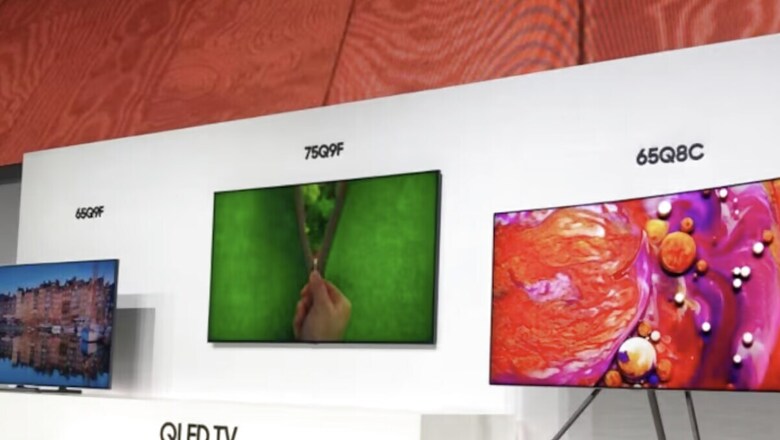
views
When it comes to TV types, QLED and OLED are two acronyms that are sure to stand out if you have been shopping for a new TV. Even though OLED and QLED are only one letter apart, these two kinds of TVs take quite different approaches to creating an image on the screen. Though the gaps have closed recently, each has advantages and disadvantages. The best kind of TV for you will depend on your spending limit, the layout of your room, and your level of picture quality preference.
OLED (Organic Light-Emitting Diode) and QLED (Quantum Dot LED) are two display technologies used in televisions. The primary distinction between the two is how they generate light.
OLED or QLED: How Does It Work?
OLED TVs use an organic material layer that, when exposed to an electric current, emits light. This implies that an OLED display can produce flawless blacks and infinite contrast because each pixel can turn on and off independently. In comparison to other TV types, OLED TVs typically have a wider viewing angle and are more energy-efficient.
On the other hand, QLED TVs, use a layer of tiny semiconductor crystals known as quantum dots to emit light when activated by a backlight. This means that QLED TVs lack the perfect blacks and infinite contrast of OLED TVs, but they can still produce extremely high levels of brightness and colour accuracy. QLED TVs are also more durable and last longer than OLED TVs.
OLED or QLED: What About The Picture Quality
OLED TVs are widely regarded as the superior choice for picture quality due to their perfect blacks and infinite contrast. However, QLED TVs can still produce extremely high levels of brightness and colour accuracy, and they are frequently less expensive than OLED TVs.
Furthermore, QLED TVs with the local dimming feature have an advantage over OLEDs. This feature divides the screen into smaller areas, each with its own LED backlight. This gives you more control over your image and allows for deeper blacks.
In addition, QLED TVs are widely regarded as more durable and long-lasting than OLED TVs. Burn-in and image retention are problems with OLED TVs that occur when the same image is displayed on the screen for an extended period. These issues do not exist in QLED TVs.
OLED or QLED: Which Is Better?
Finally, your personal preferences and budget will determine whether you choose an OLED TV or a QLED TV. If you want the best picture quality and are willing to pay a premium, an OLED TV may be the better choice. However, if you want a high-quality display that is both affordable and reliable, a QLED TV may be the way to go.




















Comments
0 comment